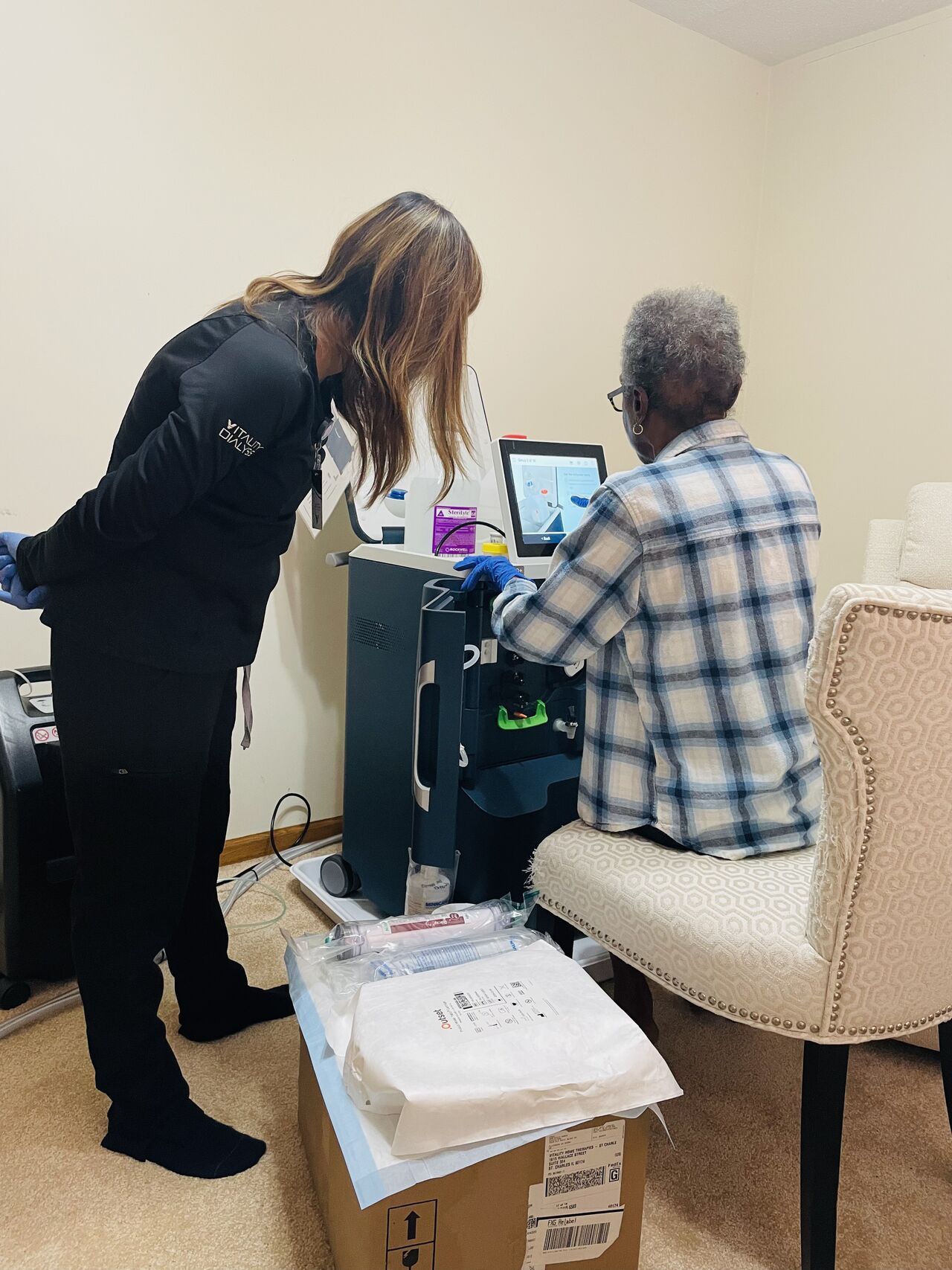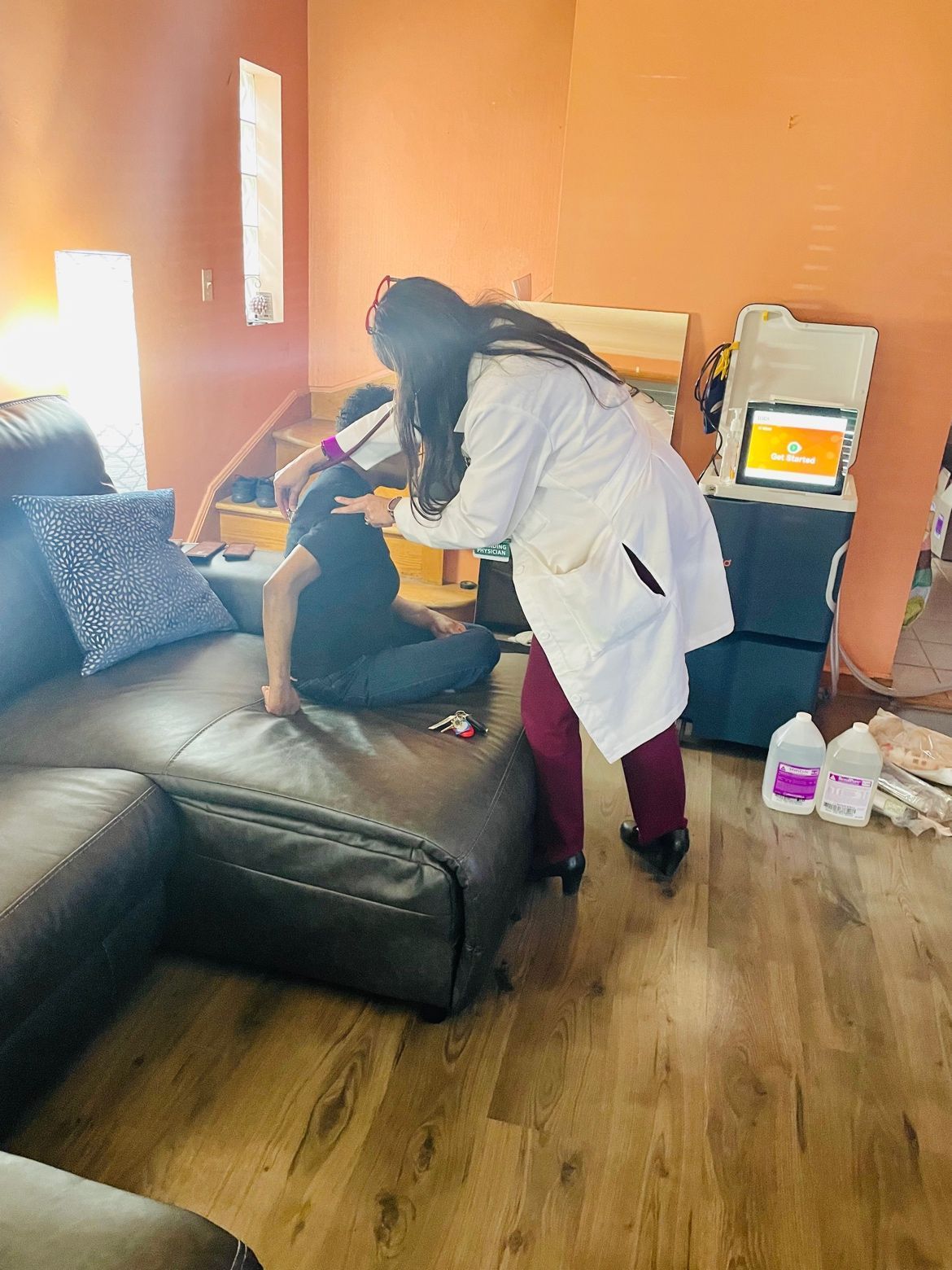Peritoneal Dialysis Treatment Coming Soon!
Written by: Vitality Dialysis

Your kidneys clean waste products, toxins, and excess water from your blood—all functions essential to life. Kidney disease, infections, or injuries can stop these processes, which can be deadly. Dialysis is a lifesaving medical treatment that performs these functions when your kidneys cannot. Although dialysis cannot replace everything kidneys do, it can save and extend your life for many years. Below, you’ll find answers to some of the most frequently asked questions about dialysis, including 'What is dialysis?' and 'How does dialysis work?’
What is Dialysis?
Dialysis is a medical treatment that helps people survive kidney failure or injury. Without kidneys or a dialysis machine to filter and clean the blood, toxins, waste, and excess fluid would build up in your bloodstream, which would be deadly in just a few days. Dialysis was introduced in the 1940s and then it became the standard kidney failure treatment by the 1970s. Over the years, newer technologies have improved dialysis treatments, saving millions of lives and improving the quality of life for patients around the world. In the past, dialysis could only be administered in a hospital or a special dialysis center. Today, however, dialysis machines like the ones we use at Vitality Dialysis are smaller, more efficient, and easier to use so patients and their families can use them safely and successfully at home.
Who Needs Dialysis?
If chronic kidney disease progresses to the “end-stage renal disease” phase (ESRD), the kidneys are unable to filter the blood to keep it safe. This is also called “end-stage kidney disease” (ESKD). Severe kidney damage from an injury may also cause this sort of dysfunction and blood toxicity. Patients with kidney failure need dialysis to keep them alive until they can receive a kidney transplant, or until injured kidneys heal.
How does Dialysis Work?
While understanding what dialysis is remains a common concern, it’s equally important to explain how the treatment works to support the body when the kidneys can no longer function properly. Dialysis is a multistep treatment process because it has to clean all your blood. Healthy kidneys can filter approximately one-half cup of blood per minute. Depending on weight, gender, and age, the average adult’s body has anywhere between 18 and 24 cups of blood. Depending on the type of dialysis you receive, the methods of cleaning the blood will differ, but the result is the same. The two major types of dialysis, hemodialysis, and peritoneal dialysis, are described below.
How Long Does Dialysis Take?
Most patients who are on dialysis have to devote a considerable amount of time to this treatment to stay alive, and it is usually a life-long endeavor. The average patient must have a three to four-hour dialysis session at least three times a week. These averages can change based on the type of dialysis a patient receives, whether in a center or at home. It also depends on the frequency and timing of the treatments. Daytime treatments are shorter, but nocturnal dialysis sessions (overnight as you sleep) can last from six to eight hours and are gentler on the body. Some people have a shorter session every day. Keep in mind that if you have to travel to a hospital or dialysis center for your treatments, you also have to factor in travel time. You and your doctor will decide which options are best for your health and lifestyle considerations.
What are the Different Types of Dialysis?
All forms of dialysis perform the blood-cleaning functions of the kidneys. The two main types of dialysis that can be administered in several different ways, however:
Hemodialysis
Hemodialysis, the most common form of dialysis, cleans the blood by filtering it through a dialyzer machine. That means your healthcare provider needs to establish a “vascular access” point where the blood can flow out of your body through one needle, be cleaned as it passes through the dialyzer machine, and then returned to your body through a second needle after the toxins and waste products have been removed. This process also replaces essential minerals and electrolytes to maintain healthy fluid balance.
There are a few different ways to establish vascular access, and your doctor will explain the options that will work best in your situation. This minor surgery may take place a few months or a few weeks before your first dialysis session, but if your kidney failure is critical, it can be done immediately as well. Once vascular access is established, a nurse or technician connects this vascular access point to the dialyzer machine, and you can rest, read, watch TV, or sleep while the machine does its job.
Peritoneal Dialysis
Peritoneal dialysis filters your blood by filling open spaces in your gut (the peritoneal cavity) with a dialysis fluid and then draining it out again. A surgeon performs laparoscopic surgery to place a peritoneal catheter into your abdomen. Peritoneal dialysis can continue all day as you work, or it can be done overnight. This type of dialysis can be done at home, and you would receive special training in order to perform it on yourself.
Can Dialysis Be Done at Home?
Yes, both types of dialysis can be performed at home if your doctor feels that you are a good candidate for this more convenient option. Services like Vitality Dialysis help patients get set up with the equipment and training they and their family members need to navigate home dialysis with comfort, convenience, and confidence, so they can have more control over their schedules and lifestyles.

Benefits & Risks of Dialysis
Dialysis has many benefits, but as with any medical treatment, patients need to understand the risks as well.
Benefits
Dialysis can give kidney disease and kidney failure patients a new lease on a longer life span. Depending on individual factors and how closely patients stick to their treatment plan, dialysis can give people five to 30 more years of full, active, life. Your doctor will advise you on adjusting your nutrition, fluid intake, medications, etc. to help you live as long and well as possible on dialysis.
Risks
Because both types of dialysis require access to your blood, there are risks of possible infection, blood clots, and risky blood pressure fluctuations. Your healthcare team will carefully monitor and administer your first rounds of dialysis to check for signs of problems and make any necessary adjustments. If you are a good candidate for home dialysis, they will train you on how to minimize risks and watch for signs of distress that would warrant a call to the doctor.
Side Effects of Dialysis
Some of the most common side effects of dialysis include low blood pressure, muscle cramps, itchy skin, restless legs, fatigue, anemia, and inflammation. Your doctor will help you adopt lifestyle habits to minimize these side effects.
When to Call a Doctor
Call your doctor immediately if you notice unusual changes in your body’s function or body parts during or after dialysis. Also, contact your doctor if your dialysis treatments are not providing their intended benefits, you are injured or become ill, have an infection or symptoms of a blood clot.

Have Questions About Home Dialysis? Let’s Talk!
Millions of people with kidney disease or kidney failure live healthy, full lives on home dialysis, which gives them more control over their schedule and lifestyle. Vitality Dialysis has a compassionate, experienced team of nurses and technicians ready to support you on your home dialysis journey. Serving patients across Illinois, Wisconsin, and Michigan, we provide expert care in the comfort of your home. If you have questions like “What is dialysis?” or want to explore your home dialysis options, please
contact us today—we're here to help!
© Copyright 2024 | Vitality Dialysis Privacy Policy |
Website imagined and executed by RivalMind.
Contact






